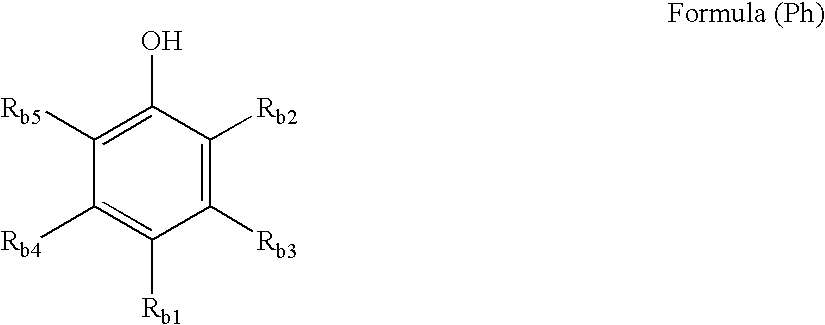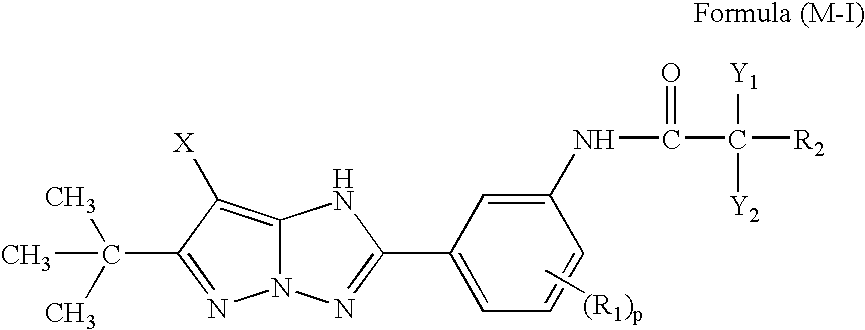Silver halide color photographic photosensitive material
a color photographic and silver halide technology, applied in the field of silver halide color photographic photosensitive materials, can solve the problems of increased film thickness of photosensitive materials, insufficient image storage, and difficulty in obtaining yellow hues with high purity
- Summary
- Abstract
- Description
- Claims
- Application Information
AI Technical Summary
Benefits of technology
Problems solved by technology
Method used
Image
Examples
second embodiment
(Hereinafter, the present invention means to include the silver halide color photographic photosensitive material described in the items (11) to (14) above.)
[0110](15) A silver halide color photographic photosensitive material comprising, on a support, at least one yellow color-forming photosensitive silver halide emulsion layer, at least one magenta color-forming photosensitive silver halide emulsion layer and at least one cyan color-forming photosensitive silver halide emulsion layer,
[0111]wherein at least one magenta dye-forming coupler, represented by any one of formulae (M-I) to (M-X) set forth below is incorporated in the same layer as at least one compound represented by formula (Ph-1) or (Ph-3) set forth below:
[0112]
[0113]wherein, in formula (M-I), Y1 and Y2 each independently represent a hydrogen atom, an alkyl group, a cycloalkyl group, an aryl group, a heterocyclic group, an alkoxy group, a cycloalkoxy group, or a heterocyclic oxy group; R1 represents an alkyl group, a cy...
third embodiment
(Hereinafter, the present invention means to include the silver halide color photographic photosensitive material described in the items (15) to (20) above.)
[0151]Herein, the present invention means to include each of the above first, second and third embodiments, unless otherwise specified.
[0152]The present invention is explained below in detail.
[0153]The term “aliphatic group” used in the present specification means such groups, in which the aliphatic portion may be a saturated or unsaturated, straight chain, branched chain, or a cycle, and the aliphatic portion embraces, for example, an alkyl group, an alkenyl group, a cycloalkyl group, and a cycloalkenyl group; and these can be unsubstituted or substituted. Further, the term “aryl group” used herein means a substituted or unsubstituted, monocyclic or condensed ring. The term “heterocyclic group” used herein means such groups, in which the heterocycle portion contains a hetero atom(s) (such as nitrogen, sulfur and oxygen atoms) i...
synthetic example 1
Synthesis of Coupler (3)
[0218]Coupler (3) was synthesized according to the following synthesis route:
[0219]
[0220]To a solution containing 438 g of 3-(2,4-di-t-amylphenoxy)propylamine, 210 ml of triethylamine and 1 liter of acetonitrile, under ice-cooling, 333 g of orthonitrobenzene sulfonyl chloride was added gradually with stirring. The temperature of the reaction system was elevated up to room temperature, and then, agitation was further continued for 1 hour. To the reaction mixture, ethyl acetate and water were added for separation. The organic layer was washed with dilute hydrochloric acid and saturated brine, and then dried with anhydrous magnesium sulfate. Thereafter, the solvent was distilled off under a reduced pressure. Crystallization from a mixed solvent of ethyl acetate and hexane gave 588 g of compound (A-1).
[0221]To a mixture of 540 ml of isopropanol and 90 ml of water, 84.0 g of a reduced iron and 8.4 g of ammonium chloride were dispersed and heated under reflux for 1...
PUM
| Property | Measurement | Unit |
|---|---|---|
| temperature | aaaaa | aaaaa |
| temperature | aaaaa | aaaaa |
| absorption wavelength | aaaaa | aaaaa |
Abstract
Description
Claims
Application Information
 Login to View More
Login to View More - R&D
- Intellectual Property
- Life Sciences
- Materials
- Tech Scout
- Unparalleled Data Quality
- Higher Quality Content
- 60% Fewer Hallucinations
Browse by: Latest US Patents, China's latest patents, Technical Efficacy Thesaurus, Application Domain, Technology Topic, Popular Technical Reports.
© 2025 PatSnap. All rights reserved.Legal|Privacy policy|Modern Slavery Act Transparency Statement|Sitemap|About US| Contact US: help@patsnap.com



